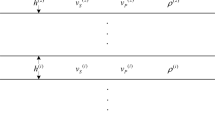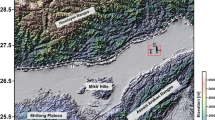Abstract
This article demonstrates the implementation of recurrent neural network (RNN) model in optimizing amplitude versus offset (AVO) attributes for indicating lithology and hydrocarbon zone on seismic data. Several drawbacks exist in the conventional implementation of AVO attributes for hydrocarbon exploration, including ambiguous AVO amplitude response as direct hydrocarbon indicators (DHIs), high cost of conventional seismic inversion and ambiguity from a non-absolute range of AVO scale of quality factor of P-wave (AVO SQp) and AVO scale of quality factor of S-wave (AVO SQs) attributes. Hence, this study aimed to optimize the application of AVO attributes by implementing an RNN model that solves nonlinear approximation with a faster, more economical, and reliable approach, supplied with well data as the data control. Sixteen features were extracted from seismic data as input with two targets of SQp and SQs from wells as output in the Angsi field. The model consisted of the improved algorithm of standard RNN called gated recurrent unit layers, followed by a simple RNN layer, and fully connected dense layers to predict SQp and SQs as lithology and hydrocarbon indicators, respectively. The model managed to predict the I-35 hydrocarbon reservoir zone anomalies, characterized by low SQp (sand-prone interval) and high SQs (hydrocarbon-bearing interval). The results indicated that the proposed RNN model performed efficiently as an alternative approach to bypass the conventional seismic inversion method and to optimize the application of AVO attributes in indicating lithology and hydrocarbon zone in seismic data.

modified from Ghosh and Hoe (2002))

(modified from Petronas-Research (1999)). The Angsi field is denoted by the dashed circle














Similar content being viewed by others
References
Ahmed, N., Khalid, P., Ghazi, S., & Anwar, A. W. (2015). AVO forward modeling and attributes analysis for fluid’s identification: a case study. Acta Geodaetica et Geophysica, 50(4), 377–390.
Aki, K., & Richards, P. G. (2002). Quantitative seismology.
Avseth, P., Janke, A., & Horn, F. (2016). AVO inversion in exploration—Key learnings from a Norwegian Sea prospect. The Leading Edge, 35(5), 405–414.
Che, Z., Purushotham, S., Cho, K., Sontag, D., & Liu, Y. (2018). Recurrent neural networks for multivariate time series with missing values. Scientific reports, 8(1), 1–12.
Cho, K., Van Merriënboer, B., Gulcehre, C., Bahdanau, D., Bougares, F., Schwenk, H., & Bengio, Y. (2014). Learning phrase representations using RNN encoder-decoder for statistical machine translation.
Deng, L., Hinton, G., & Kingsbury, B. (2013, May). New types of deep neural network learning for speech recognition and related applications: An overview. In 2013 IEEE international conference on acoustics, speech and signal processing (pp. 8599-8603). IEEE.
Eichkitz, C. G., Schreilechner, M. G., Amtmann, J., & Schmid, C. (2009). Shallow seismic reflection study of the Gschliefgraben landslide deposition area-interpretation and three dimensional modeling. Austrian Journal of Earth Sciences, 102(2).
Ghosh, D. P., & Hoe, L. M. (2002). AVO, Rock Properties and Pitfalls (Paper 23).
Ghosh, D., Halim, M. F. A., Brewer, M., Viratno, B., & Darman, N. (2010). Geophysical issues and challenges in Malay and adjacent basins from an E & P perspective. The Leading Edge, 29(4), 436–449.
Gopalakrishnan, S. G., & Shawari, R. (1999). Angsi: Malaysia’s 1st Tight Gas Development. Paper SPE, 54335, 20–22.
Graves, A. (2013). Generating sequences with recurrent neural networks. J arXiv preprint arXiv.
Graves, A., Wayne, G., & Danihelka, I. (2014). Neural turing machines. J arXiv preprint arXiv.
Hampson, D. (2005). Simultaneous inversion of pre-stack seismic data. Seg Technical Program Expanded Abstracts. https://doi.org/10.1190/1.2148008
Hermana, M., Ghosh, D. P., & Sum, C. W. (2016). Optimizing the lithology and pore fluid separation using attenuation attributes. In Offshore Technology Conference Asia. OnePetro.
Hermana, M., Lubis, L. A., & Alashloo, S. M. (2020). A novel method in hydrocarbon and reservoir properties prediction based on elastic properties. Journal of Earth Sciences and Technology, 1(1), 38–43.
Hossain, T. M., Watada, J., Aziz, I. A., Hermana, M., Meraj, S. T., & Sakai, H. (2021). Lithology prediction using well logs: A granular computing approach. Journal of International Journal Innovation Computer Inference Control, 17(1), 225–244.
Ismail, A., Ewida, H. F., Al-Ibiary, M. G., & Zollo, A. (2020). Application of AVO attributes for gas channels identification, West offshore Nile Delta, Egypt. Petroleum Research, 5(2), 112–123.
Keary, P., Brooks, M., & Hill, I. (2002). An Introduction to Geophysical Exploration, Blackwell Science.
Khalid, P., Ahmed, N., Khan, K. A., & Naeem, M. (2015). AVO-derived attributes to differentiate reservoir facies from non-reservoirs facies and fluid discrimination in Penobscot area Nova Scotia. Geosciences Journal, 19(3), 471–480.
Lew, C. L., Hermana, M., & Ghosh, D. P. (2018). Improvised approach using SQp-SQs attributes for hydrocarbon prediction: A field case study in Malay Basin. In SEG Technical Program Expanded Abstracts 2018 (pp. 3105–3109). Society of Exploration Geophysicists.
Liu, L., Ouyang, W., Wang, X., Fieguth, P., Chen, J., Liu, X., & Pietikäinen, M. (2020). Deep learning for generic object detection: A survey. International journal of computer vision, 128(2), 261–318.
Ng, K., Abdou Ali, A. M., Hanalim, L., Suwarlan, W., & Lee, C. (2014). An Integrated Subsurface Approach to Reveal Reservoir Connectivity for a Mature Field. In International Petroleum Technology Conference. OnePetro.
Ostrander, W. (1984). Plane-wave reflection coefficients for gas sands at nonnormal angles of incidence. Geophysics, 49(10), 1637–1648.
Petronas-Research. (1999). The Petroleum Geology and Resources of Malaysia. Petronas.
Ridwan, T. K., Hermana, M., Lubis, L. A., & Riyadi, Z. A. (2020). New AVO attributes and their applications for facies and hydrocarbon prediction: A case study from the northern Malay basin. Applied Sciences, 10(21), 7786.
Robinson, E. S. (1988). Basic exploration geophysics.
Roden, R., Forrest, M., Holeywell, R., Carr, M., & Alexander, P. A. (2014). The role of AVO in prospect risk assessment. Interpretation, 2(2), SC61–SC76.
Ronneberger, O., Fischer, P., & Brox, T. (2015). U-net: Convolutional networks for biomedical image segmentation. In International Conference on Medical image computing and computer-assisted intervention (pp. 234-241). Springer, Cham.
Sagheer, A., & Kotb, M. (2019). Time series forecasting of petroleum production using deep LSTM recurrent networks. Neurocomputing, 323, 203–213.
Titos, M., Bueno, A., Garcia, L., & Benitez, C. (2018). A deep neural networks approach to automatic recognition systems for volcano-seismic events. IEEE Journal of Selected Topics in Applied Earth Observations Remote Sensing, 11(5), 1533–1544.
Varhaug, M. (2016). Subsea Infrastructure. Schlumberger, Texas, USA: Oilfield Review.
Acknowledgments
The authors would like to thank PETRONAS Malaysia for providing the data for this study. We would like to also extend our sincere gratitude to UTP Fundamental Research Grant with grant number 015MD0-059 for funding this study and utmost appreciation to all lecturers and colleagues in the Centre for Subsurface Imaging (CSI) and the Department of Geosciences of Universiti Teknologi PETRONAS for their guidance and support throughout this study. Moreover, we also acknowledge CGG Company for providing the license of HampsonRussell software, Ikon Science Company for granting the license of RokDoc software, and Schlumberger Company for providing the license of Petrel software.
Author information
Authors and Affiliations
Corresponding authors
Ethics declarations
Conflict of Interests
The authors have no competing interests to declare that are relevant to the content of this article.
Rights and permissions
About this article
Cite this article
Refael, R., Hermana, M. & Hossain, T.M. Optimization of Amplitude Versus Offset Attributes for Lithology and Hydrocarbon Indicators Using Recurrent Neural Network. Nat Resour Res 31, 2505–2522 (2022). https://doi.org/10.1007/s11053-022-10103-1
Received:
Accepted:
Published:
Issue Date:
DOI: https://doi.org/10.1007/s11053-022-10103-1




